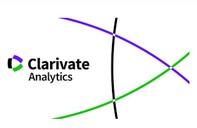“Lo bueno dura poco”: disminuir las emociones positivas influye en nuestros niveles de optimismo
Resumen
A pesar del creciente interés en la comprensión de las estrategias de regulación emocional (RE) de las emociones positivas y su relación con la salud mental, la relación entre los diferentes estilos de respuesta al afecto positivo y estilos cognitivos como el optimismo aún no se ha probado empíricamente. El objetivo del presente estudio fue evaluar el efecto de las estrategias para regular emociones positivas (evaluadas por el cuestionario Response to Positive Affect -RPA) sobre el optimismo, y la posible mediación del afecto positivo en esta relación. 250 participantes completaron el cuestionario RPA, medidas de optimismo y afecto positivo, y realizaron un procedimiento de inducción emocional aplicado a través de Internet. Los resultados muestran que el afecto positivo no media la relación entre las estrategias de regulación emocional y los niveles de optimismo. No obstante, disminuir las emociones positivas (“dampening”) fue la única estrategia que predijo los niveles de optimismo después de la inducción. Se señala la necesidad de nuevos estudios con el fin de mejorar la comprensión de los mecanismos implicados en la regulación y el optimismo.
Descargas
Citas
Aldao, A., Nolen-Hoeksema, S., & Schweizer, S. (2009). Emotion-regulation strategies across psychopathology: A meta-analytic re-view. Clinical Psychology Review, 30, 217-237. doi:10.1016/j.cpr.2009.11.004
Bates, G.W., Thompson, J.C., & Flanagan, C. (1999). The effectiveness of individual versus group induction of depressed mood. The Jour-nal of Psychology 133(3) 245–253.
Bednarski, J. D. (2012). Eliciting Seven Discrete Positive Emotions Using Film Stimuli. Unpublished Honor thesis in Psychological Sciences, Vanderbilt University, Nashville, Tennessee.
Bonanno, G. A., & Keltner, D. (1997). Facial expressions of emotion and the course of conjugal bereavement. Journal of Abnormal Psy-chology, 106, 126–137.
Brosse, A.L., Craighead, L., & Craighead, W. (1999). Testing the mood-state hypothesis among previously depressed and never-depressed individuals. Behavior. Therapy 30, 97–115.
Brown, T. A., & Barlow, D. H. (2009). A proposal for a dimensional classification system based on the shared features of the DSM-IV anxiety and mood disorders: Implications for assessment and treatment. Psychological Assessment, 21(3), 256–271. doi:10.1037/a0016608.
Carl, J. R., Soskin, D. P., Kerns, C., & Barlow, D. H. (2013). Positive emotion regulation in emotional disorders: A theoretical review. Clinical Psychology Review, 33, 343-360. doi:10.1016/j.cpr.2013.01.003.
Carver, C. S., Scheier, M. F., & Segerstrom, S. C. (2010). Optimism. Clin-ical Psychology Review, 30, 879-889.
Cohen, J. (1988). Statistical power analysis for the behavioral sciences (2nd ed.). Hillsdale, NJ: Lawrence Earlbaum Associates.
Conversano, C., Rotondo, A., Lensi, E., Della Vista, O., Arpone, F., & Reda, M. A. (2010). Optimism and its impact on mental and phys-ical well-being. Clinical practice and epidemiology in mental health: CP y EMH, 6, 25.
Eisner, L. R., Johnson, S. L., & Carver, C. S. (2008). Cognitive responses to failure and success relate uniquely to bipolar depression versus mania. Journal of Abnormal Psychology, 117(1), 154–163. doi:10.1037/0021-843x.117.1.154.
Feldman, G. C., Joormann, J., & Johnson, S. L. (2008). Responses to positive affect: A self-report measure of rumination and dampen-ing. Cognitive Therapy and Research, 32(4), 507–525. doi:10.1007/s10608-006-9083-0.
Fredrickson, B.L. (1998). What good are positive emotions? Review of General Psychology, 2, 300–319.
Fredrickson, B.L. (2001). The role of positive emotions in positive psychology: The broaden-and-build theory of positive emotions. American Psychologist, 56, 218–226.
Fredrickson, B. L., Tugade, M. M., Waugh, C. E., & Larkin, G. R. (2003). What good are positive emotions in crisis? A prospective study of resilience and emotions following the terrorist attacks on the United States on September 11th, 2001.Journal of personality and social psychology, 84(2), 365.
Gross, J. J. (1998). The emerging field of emotion regulation: An inte-grative review. Review of General Psychology, 2(3), 271–299. doi:10.1037/1089-2680.2.3.271.
Gross, J. J., & Levenson, R. W. (1995). Emotion elicitation using films. Cognition and Emotion, 9, 87–108.
Hayes, A. F. (2009). Beyond Baron and Kenny: Statistical mediation analysis in the new millennium. Communication monographs, 76(4), 408-420.
Keltner, D., & Bonanno, G. A. (1997). A study of laughter and dissoci-ation: Distinct correlates of laughter and smiling during be-reavement. Journal of Personality and Social Psychology, 73, 687–702.
MacLeod, A. K. (1996). Affect, emotional disorder, and future-directed thinking. Cognition & Emotion, 10(1), 69-86.
McCormack, H. M., Horne, D. J., & Sheather, S. (1988). Clinical appli-cations of visual analogue scales: a critical review. Psychological me-dicine, 18(4), 1007-1019.
Olofsson, M. E., Boersma, K., Engh, J., & Wurm, M. (2014). A psycho-metric evaluation of the Swedish version of the Responses to Pos-itive Affect questionnaire. Nordic Journal of Psychiatry, 68(8), 588-93.
Perczek, R., Carver, C. S., Price, A. A., & Pozo-Kaderman, C. (2000). Coping, mood, and aspects of personality in Spanish translation and evidence of convergence with English versions. Journal of per-sonality Assessment, 74(1), 63-87.
Raes, F., Daems, K., Feldman, G. C., Johnson, S. L., & Van Gucht, D. (2010). A psychometric evaluation of the Dutch version of the re-sponses to positive affect questionnaire. Psychologica Belgica, 49(4), 293-310.
Rottenberg, J., Ray, R. D., & Gross, J. J. (2007). Emotion elicitation us-ing films. In J. A. Coan & J. J. B. Allen (Eds.). The handbook of emo-tion elicitation and assessment. London: Oxford University Press.
Rucker, D. D., Preacher, K. J., Tormala, Z. L., & Petty, R. E. (2011). Mediation analysis in social psychology: Current practices and new recommendations. Social and Personality Psychology Compass, 5(6), 359-371.
Scheier, M. F., & Carver, C. S. (1985). Optimism, coping, and health: Assessment and implication of generalized outcome expectan-cies. Health Psychology, 4, 219−247.
Scheier, M. F., Carver, C. S., & Bridges, M. W. (1994). Distinguishing optimism from neuroticism (and trait anxiety, self-mastery, and self-esteem): a reevaluation of the Life Orientation Test. Journal of personality and social psychology, 67(6), 1063-1078.
Segal, Z. V., Gemar, M., & Williams, S. (1999). Differential cognitive response to a mood challenge following successful cognitive therapy or pharmacotherapy for unipolar depression. Journal of Abnormal Psychology, 108, 3–10.
Stein, N., Folkman, S., Trabasso, T., & Richards, T. A. (1997). Appraisal and goal processes as predictors of psychological well-being in bereaved caregivers. Journal of Personality and Social Psychology, 72(4), 872.
Watkins, E. R. (2008). Constructive and unconstructive repetitive thought. Psychological bulletin, 134(2), 163.
Werner-Seidler, A., Banks, R., Dunn, B. D., & Moulds, L. (2013). An in-vestigation of the relationship between positive affect regulation and depression. Behaviour Research and Therapy, 51, 46-56. doi:10.1016/j.brat.2012.11.001.
Williams, J.M.G., Barnhofer, T., Crane, C., & Beck, A.T. (2005). Prob-lem solving deteriorates following mood challenge in formerly depressed patients with a history of suicidal ideation. Journal of Abnormal Psychology. 114, 421–431.
Yang, H., & Guo, W. (2014). Chinese version of the Responses to Posi-tive Affect questionnaire: testing the factor structure, reliability, and validity in a college student sample. Psychological reports, 115(2), 467-484.
Las obras que se publican en esta revista están sujetas a los siguientes términos:
1. El Servicio de Publicaciones de la Universidad de Murcia (la editorial) conserva los derechos patrimoniales (copyright) de las obras publicadas, y favorece y permite la reutilización de las mismas bajo la licencia de uso indicada en el punto 2.
© Servicio de Publicaciones, Universidad de Murcia, 2024
2. Las obras se publican en la edición electrónica de la revista bajo una licencia Creative Commons Reconocimiento-CompartirIgual 4.0 Internacional (texto legal). Se pueden copiar, usar, difundir, transmitir y exponer públicamente, siempre que: i) se cite la autoría y la fuente original de su publicación (revista, editorial y URL de la obra); ii) no se usen para fines comerciales; iii) se mencione la existencia y especificaciones de esta licencia de uso.
3. Condiciones de auto-archivo. Se permite y se anima a los autores a difundir electrónicamente las versiones pre-print (versión antes de ser evaluada y enviada a la revista) y/o post-print (versión evaluada y aceptada para su publicación) de sus obras antes de su publicación, ya que favorece su circulación y difusión más temprana y con ello un posible aumento en su citación y alcance entre la comunidad académica. Color RoMEO: verde.













